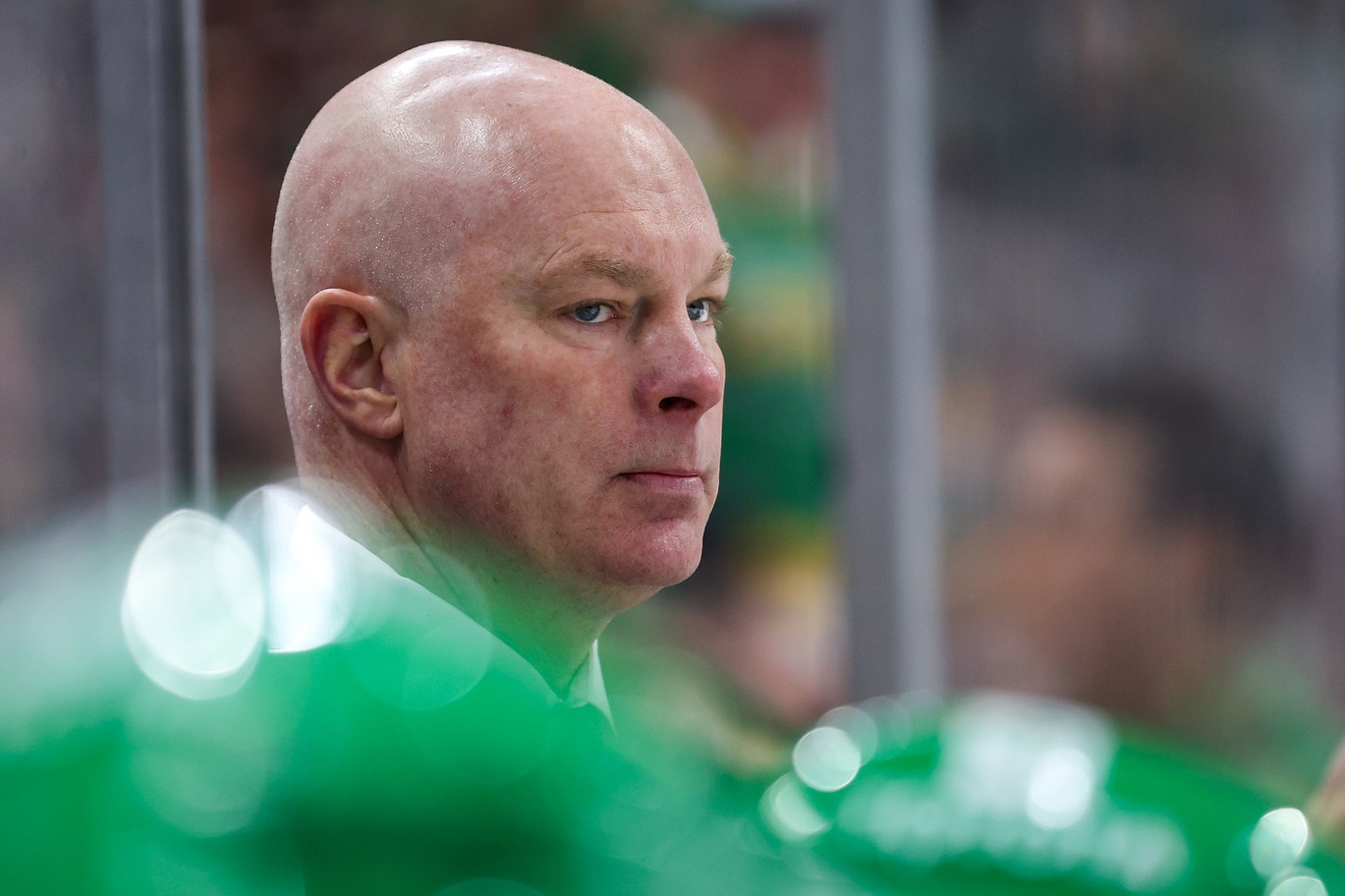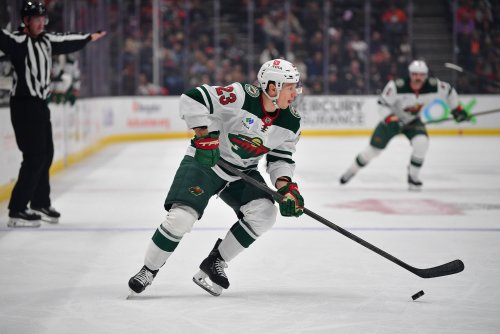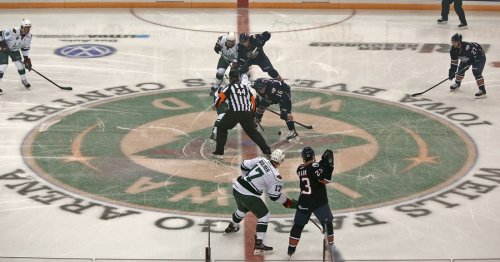
The Minnesota Wild’s 2024 offseason has a bit of a dark cloud hanging over it. After a disappointing 2023-24 season marred by injury and underperformance, questions about Minnesota’s roster and its vision for the future are bubbling to the surface.
2023-24 was supposed to be the year that proved, one way or another, whether they could win the playoffs. Instead, they missed the tournament entirely. To reverse that downward trajectory, the team needs to identify which players are part of the problem and who can be part of the solution.
New head coach John Hynes may be just the man to do it.
There are two reasons that Hynes may be able to identify the roster’s weaknesses better than his predecessor. The first is straightforward: he brings fresh eyes to the coaching staff.
Hynes replaced head coach Dean Evason less than two months into the season amidst a seven-game losing streak. Evason had been coaching in Minnesota since 2018, which means he had over five years of experience with the roster. He likely had built relationships with players like Mats Zuccarello, Marcus Foligno, Jared Spurgeon, Ryan Hartman, and Freddy Gaudreau.
That familiarity can be an advantage in getting those players going, but it can also be a crutch. Evason tended to lean on his veterans in crucial situations because they had earned his trust. However, in some cases, those players earned that trust years ago. Throughout a half-decade, players get older, and they can decline significantly.
When Hynes arrived, the team’s youngest leaders took on leading roles. Joel Eriksson Ek and Matt Boldy replaced Hartman and Zuccarello on the top line, and Marco Rossi became a mainstay in the middle-six. Hynes put rookie phenom Brock Faber on the ice with Kaprizov’s line, expecting to feed the team’s superstar.
These new roles came with meaningful expectations, but they were the right moves for the team at the time. They also come with the added benefit of developing the team’s future leaders into more significant roles. It’s an encouraging sign that Hynes might work more rookies into next year’s lineup. With Marat Khusnutdinov, Liam Ohgren, and Riley Heidt on the roster bubble for next season, Hynes seems more likely to hold a bona fide open camp competition, which makes him a better fit to kick off the youth movement.
The second reason Hynes can better identify the team’s weaknesses is that he tends to load up the top of the lineup card. He puts his best players on the top line and his best defenders on the top pair and then plays those groups together as much as possible.
In contrast, Evason usually distributed his best players up and down the lineup. There were many good reasons for this. Balanced lineups are harder to gameplan against. When Evason split Boldy, Kaprizov, and Eriksson Ek across the top three lines, it made it more difficult for opposing coaches to deploy a shutdown line against all three groups.
Spreading out his best players also allowed Kaprizov to develop chemistry with Zuccarello and Hartman, making that line greater than the sum of its parts. Similarly, Evason unlocked chemistry between Boldy and Johansson in 2022-23. When the team was in the heat of a playoff battle, these were real advantages for the Wild.
The downside of this philosophy is that it’s hard to self-scout when the team’s best players inflate their linemates’ production. It leads to an impossible debate: Does Matt Boldy make Johansson relevant, or was Johansson the missing piece to unlock Boldy’s ‘22-23 late-season scoring tear?
At the time of the signings, any analytical argument against those contracts came with a caveat: There could be intangible forces at play that aren’t captured well by the numbers. Now that Hynes has separated Hartman and Johansson from their superstar linemates, it’s clear that the numbers were right.
That leaves a middle-six group filled with expensive veterans that rookies could have replaced. The Wild can’t undo those moves, but at least they can accurately evaluate their forwards moving forward.
Hynes’s willingness to build top-heavy lineups makes him an excellent fit with general manager Bill Guerin. Guerin’s biggest strength seems to be identifying prospects and patiently developing them. On the other hand, he tends to fall in love with his roster, as evidenced by locking in the leadership group a year early last season. Long contracts for veterans are blocking spots for those same prospects, but Hynes might be a remedy.
Hynes is willing to play the veterans together even if they look replaceable, rather than icing them alongside the team’s stars as cornerstone role players. In other words, if the roster doesn’t have the depth to compete, he’ll let the bottom fall out.
That pairs perfectly with Guerin’s vision of a high-accountability team culture. Players will play in the slot where they belong. If a younger player can replace an older one, Hynes will adjust accordingly.
This philosophy makes Guerin more accountable to his roster. The lineup card will look ugly some nights, but that’s a reflection of the quality of player Hynes has at his disposal. Minnesota can’t afford to strap market-rate veterans to its star players and expect to compete with the Dallas Stars, Colorado Avalanche, or Vegas Golden Knights in the playoffs.
Dean Evason deserves credit for trying. Nobody could have tinkered enough chemistry into the lineup to get a deep playoff run from this roster. Eventually, a run of bad injury luck left him nothing left to tinker with, which exposed just how big some of the roster’s holes had grown.
Hynes doesn’t want to work around those holes. He’s willing to expose them, which hopefully will enable the team to finally patch them up.
Think you could write a story like this? Hockey Wilderness wants you to develop your voice, find an audience, and we'll pay you to do it. Just fill out this form.
-
 4
4








Recommended Comments
Join the conversation
You can post now and register later. If you have an account, sign in now to post with your account.
Note: Your post will require moderator approval before it will be visible.